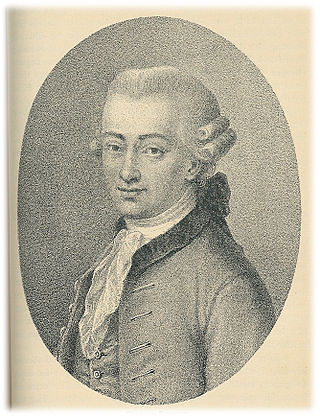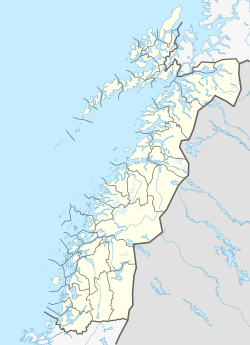
Nordland is one of the three northernmost counties in Norway in the Northern Norway region, bordering Troms in the north, Trøndelag in the south, Norrbotten County in Sweden to the east, Västerbotten County to the south-east, and the Atlantic Ocean to the west. The county was formerly known as Nordlandene amt. The county administration is in the town of Bodø. The remote Arctic island of Jan Mayen has been administered from Nordland since 1995. In the southern part of the county is Vega, listed on the UNESCO World Heritage Site list.

Bindal is a municipality in the Helgeland region in the extreme southwest part of Nordland county, Norway. The administrative centre is the village of Terråk. Other villages include Bindalseidet, Holm, Vassås, Horsfjord and Åbygda.

Sømna is a municipality in Nordland county, Norway. It is part of the Helgeland traditional region. The administrative center of Sømna is the village of Vik i Helgeland. Other villages in the municipality include Dalbotn, Sund, Vennesund, and Berg.

Vevelstad is a municipality in Nordland county, Norway. It is part of the Helgeland traditional region. The administrative centre of the municipality is the village of Forvik. The municipality is relatively small and isolated, with no road connections to the rest of Norway. It is only accessible by ferry, despite much of the municipality being located on the mainland.

Herøy is a municipality in Nordland county, Norway. It is part of the Helgeland traditional region. The administrative centre of the municipality is the village of Silvalen. The island municipality is located about 15 kilometres (9.3 mi) west of the town of Sandnessjøen.

There are 15 counties in Norway. The 15 counties are administrative regions that are the first-level administrative divisions of Norway. The counties are further subdivided into 357 municipalities. The island territories of Svalbard and Jan Mayen are outside the county divisions and they are ruled directly from the national level. The capital city of Oslo is both a county and a municipality.

Brønnøysund is a town and the administrative centre of Brønnøy Municipality in Nordland county, Norway. The 3.38-square-kilometre (840-acre) town has a population (2024) of 5,093 and a population density of 1,507 inhabitants per square kilometre (3,900/sq mi).

Norwegian dialects are commonly divided into four main groups, 'Northern Norwegian', 'Central Norwegian', 'Western Norwegian', and 'Eastern Norwegian'. Sometimes 'Midland Norwegian' and/or 'South Norwegian' are considered fifth or sixth groups.
"Udsigter fra Ulriken" is the town song of Bergen, Norway. It is also known as "Bergenssangen", "Bergensiana", "Jeg tok min nystemte" and among the public "Nystemten". The lyrics were written in 1790 by the priest, politician and poet Johan Nordahl Brun when he worked as vicar at Bergen Cathedral. The melody is taken from an old French minuet. Norwegian composer Johan Halvorsen wrote orchestral variations on the melody under the name "Bergensiana". A notable performance was by Sissel Kyrkjebø in 1986, when she was 16 years old. It was her big breakthrough. She performed the song during the intermission of the Eurovision Song Contest 1986, which took place in Grieg Hall in Bergen.

Sandnessjøen is a former municipality in Nordland county, Norway. The 45-square-kilometre (17 sq mi) municipality existed from 1899 until its dissolution in 1965. The municipality encompassed the northern part of the island of Alsta in what is now Alstahaug Municipality. Originally, it (briefly) also included all of what is now Leirfjord Municipality as well. The administrative centre of the municipality was the town of Sandnessjøen.

Boreal Norge AS is a Norwegian public transport operator. Established as a subsidiary of CGEA Transport in 1999, it operates through its subsidiaries buses, ferries and trams in the counties of Finnmark, Nordland, Rogaland, Trøndelag and Troms, primarily through the purchase of former monopolists. The company has 2,500 employees and operates ca 920 buses, 34 ferries/ships and 9 trams.
Nord-Bindalen or Nordbindalen is a former administrative entity in the Helgeland district of Nordland county, Norway. It was in existence from 1658 to 1852. It is located in the present-day Bindal Municipality.

Frederich Christopher, Count of Trampe was a Dano-Norwegian count, civil servant and politician.

Gerhard Schøning was a Norwegian historian. His Reise som giennem en Deel af Norge i de Aar 1773, 1774, 1775 paa Hans Majestets Kongens Bekostning documenting travel through Trondhjem, Gudbrandsdalen, and Hedemarken, Norway in 1773–1775 has been recognized as both a historical reference and as a "minor travel classic."

Sør-Trøndelag was a county comprising the southern portion of the present-day Trøndelag county in Norway. It bordered the old Nord-Trøndelag county as well as the counties of Møre og Romsdal, Oppland, and Hedmark. To the west is the Norwegian Sea, and to the east is Jämtland in Sweden. The county was separated into a northern and southern part by the Trondheimsfjord. Slightly over 200,000 of the county's population lives in the city of Trondheim and its suburbs. The Norwegian dialect of the region is Trøndersk.

Nord-Trøndelag was a county constituting the northern part of the present-day Trøndelag county in Norway. It bordered the old Sør-Trøndelag county as well as the county of Nordland. To the west is the Norwegian Sea, and to the east is Jämtland in Sweden. The county was established in 1804 when the old Trondhjems amt was divided into two: Nordre Trondhjems amt and Søndre Trondhjems amt. In 2016, the two county councils voted to merge (back) into a single county on 1 January 2018.

Nærøysund is a municipality in Trøndelag county, Norway. It is located in the traditional district of Namdalen. The municipality was established on 1 January 2020 after the merger of the old municipalities of Vikna and Nærøy. The municipality is unique in that it has two equal administrative centre: Kolvereid and Rørvik. The other main population centres of Nærøysund include Abelvær, Foldereid, Gravvik, Ottersøy, Salsbruket, Steine, Torstad, Austafjord, Garstad, and Valøya.

Korgen is a former municipality in Nordland county, Norway. The 625.5-square-kilometre (241.5 sq mi) municipality existed from 1918 until its dissolution in 1964. The municipality included the central part of what is now Hemnes Municipality, centered around the river Røssåga. It was located in the traditional district of Helgeland. The administrative centre was the village of Korgen where Korgen Church is located.

The Cotillion Coach is a miniature coach constructed in 1888 for the celebration of the 70th birthday of Christian IX of Denmark. It was later refurbished for the celebrations of the 18th birthday of Margrethe II and once again used at the 70th birthday of Queen Ingrid. It is on display in the Royal Mews and Carriage Museum at Christiansborg Palace in Copenhagen.














